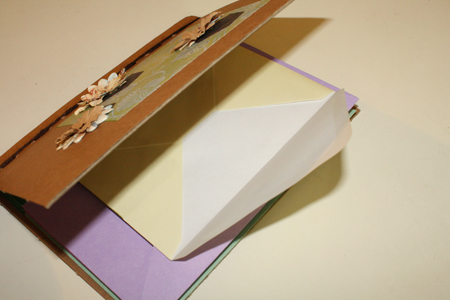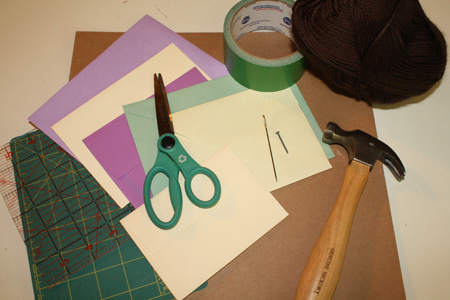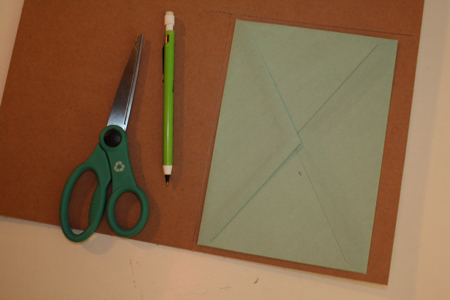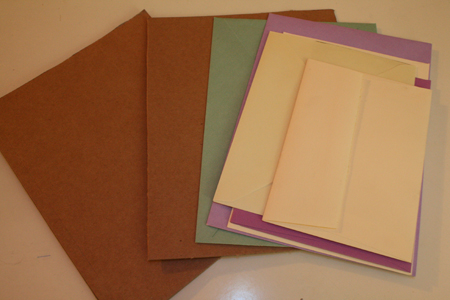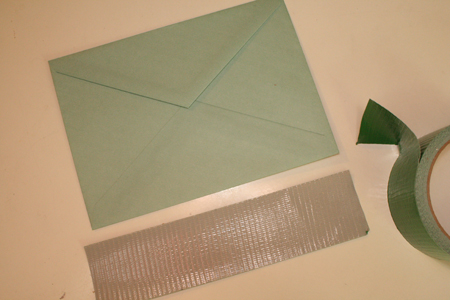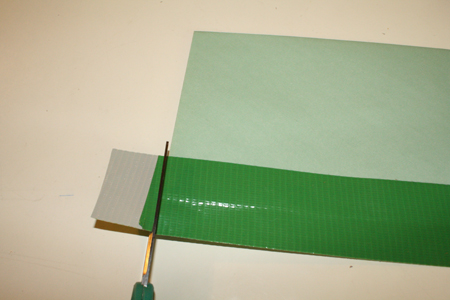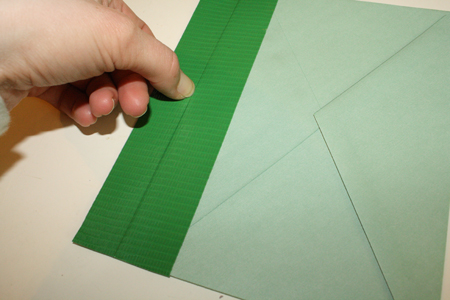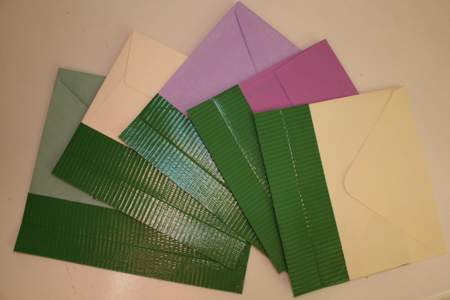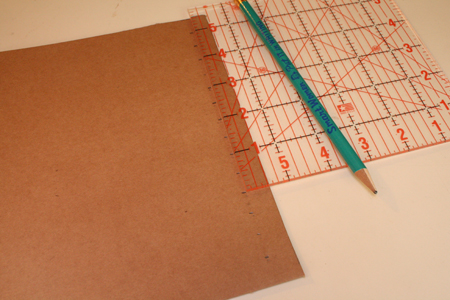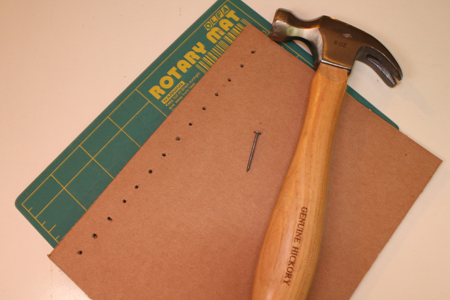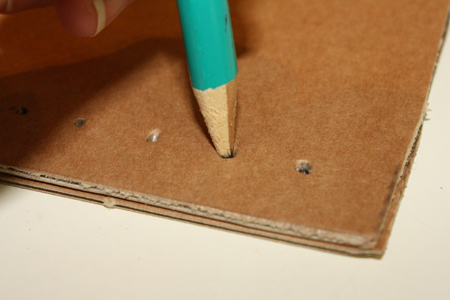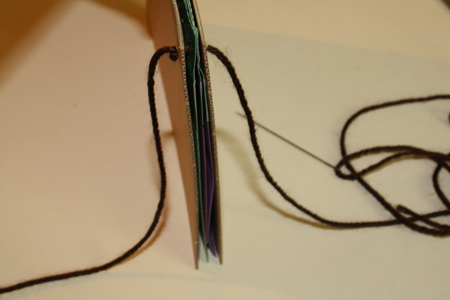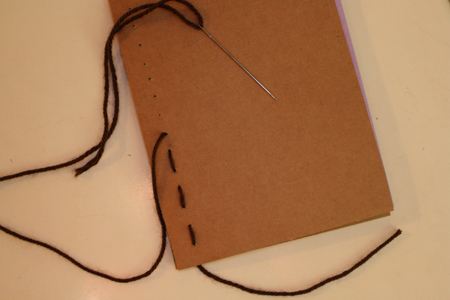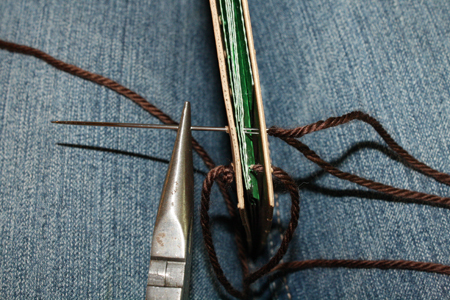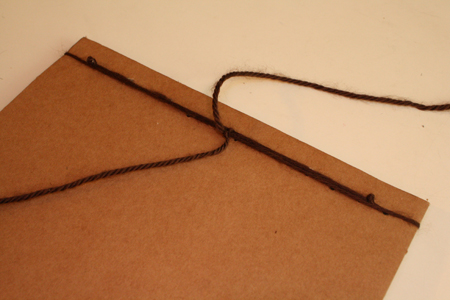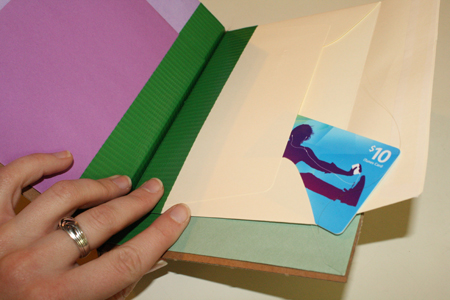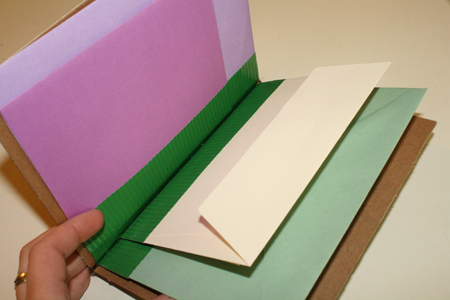When I was in elementary school I refused to wear skirts. This was for two reasons: 1) I couldn’t hang upside down from the monkey bars in skirts and 2) they never had pockets.
To this day, the lack of pockets in women’s clothing annoys me. Oh, I know the reasons for it, but a total lack of pockets in an outfit has always seemed to me a bit daft. There are ways to make up for it, of course, but even purses rarely seem to contain enough different pockets for me to properly organize my stuff.
So starting from the vantage point that one can always use more pockets in life, I present you with the idea of an envelope book. This is a book where every page is an envelope, so you can put things in them. Flattish things, of course. Make a big book of manila envelopes to organize your work papers, or a book of smaller envelopes for receipts and tickets and notes-to-self. You could even keep loose change in there.
These are also neat little gift ideas – give someone an envelope book (a generally useful object anyway) and tuck little gift certificates and cards in each page, or confetti, or a letter, or even cash.
This version of an envelope book is also pretty super easy. And it involves duct tape. Duct tape! Let’s get started.
What you’ll need:
- several envelopes – they can be of a uniform size and colour, or you can vary the size, colour, style, shape, etc.
- large sewing needle
- yarn or embroidery floss
- ruler
- pencil
- scissors
- duct tape (I used coloured duct tape for its prettiness factor)
- pliers
- cardboard* or cardstock or posterboard (this is for the book’s cover)
If you use cardboard or another rather thick material for the cover you will also need:
- hammer
- small nail
- exacto knife
- cutting board or other can-get-a-bit-nicked surface
Putting it all together:
1) Select the largest of your envelopes (if you are using different sizes) and lay it down in one corner of your cardboard or other cover material. Use a ruler to draw a box around the envelope on the cover material, a little taller than the envelope and about 1/2 to 3/4 inch wider than the envelope.
2) Using scissors or an exacto knife (depending on the thickness of your cover material), cut this rectangle out. Use it to trace an identical rectangle on the rest of the cover material, and cut the second rectangle out. You should now have a back and front cover to encase your stack of envelopes.
3) Select one envelope. Cut a piece of duct tape slightly longer than the bottom (long) edge of that envelope and lay the duct tape down sticky-side-up.
4) Place the envelope on the duct tape, covering about half the width of the duct tape and leaving the bottom half of the tape showing.
5) Cut another piece of duct tape of the same length, and place it on top of the envelope and the first piece of duct tape, sandwiching the bottom of the envelope between two pieces of tape.
6) Trim the edges of the duct tape, so they are even with the sides of the envelope.
You can also run your fingernail along the edge of the envelope where it sits under the tape, to secure everything more firmly.
7) Repeat this process for each envelope.
8) Take your covers and use a ruler to measure along one edge, making marks every 1/2 inch, in a line about 1/2 inch in from the cover’s edge.
8) If you’re using cardstock or other thick paper for your covers, just push your large sewing needle through the paper at each mark to make a hole. If you’re using something thicker, like cardboard or chipboard (as I did), use a hammer and a small nail to make the holes.
9) Put the cover with the holes in it on top of the other cover piece, matching their edges up exactly. Then use a pencil to make a mark through each hole and onto the piece of cardboard or paper underneath. Then make holes on each of the marks on the second cover piece, so that both the back and front covers have an identical line of holes along their edge.
10) Line the taped edge of each envelope up with the hole-poked edge of one of your covers. Then put the other cover on top, sandwiching all the envelopes between.
11) Thread your needle with a long piece of yarn or embroidery floss. For the smallish book size I was working with, I used about a yard of yarn, and had plenty of extra. Tie a double or triple knot in the yarn about 6 inches from the end, and leave the extra yarn dangling.
12) Hold the stack of covers and envelopes firmly in place and push the needle into the bottom hole on the back cover, through the layers of duct tape and out of the bottom hole on the front cover.* Then go up to the next hole and push the needle from the front through to the back. Lather, rinse, repeat, until you have sewn up the entire edge of the book.
*With all that duct tape, you’ll obviously have to work the needle a bit to get it through. I clamped the book between my knees to keep it in place and have both hands free to work with. I also used a pair of pliers to grip the needle and pull it all the way through each hole once I’d gotten the tip through. This is a useful trick when sewing through any particularly tough or sticky material.
12) Once you’ve sewn up the entire book, knot the yarn right next to the final hole. You can cut the yarn, or, as I did, wrap it around front cover of the book and back to the back cover, and tie it and the other, dangling end of yarn together in a knot in the center of the back cover. This keeps everything just that much tighter and makes a continuous line of yarn across the edge of the cover, which I find looks a bit nicer.
13) Carefully, bend both the front and back cover outwards at the line of yarn, forming a crease and allowing the book to be fully opened. It may help to score a line (use the tip of a mechanical pencil, with no lead showing, to make an indented line in the material) right next to the yarn, to help the cardboard fold where you want it to.
14) Decorate the cover as desired. You could even attach another envelope to the front. Or glue a ribbon across the back and front covers, so you can tie the book closed. Use paper, fabric, beads, buttons or anything you like as embellishments. Decorate with markers, or use the cover as a doodle pad, embellishing it over time.
15) You may want to label each envelope (receipts, notes, change, etc.) or decorate them, or fill them. If you’re giving the book as a gift, you could stuff the envelopes with gift cards, or little “good for one home cooked dinner,” and “good for 10 hugs” type coupons. Or put a little note in each pocket, or a silly poem, or a fifty-word story (my friend Tim just published a whole book of those, if you’re looking for ideas or light reading).

